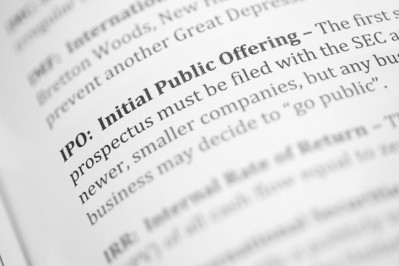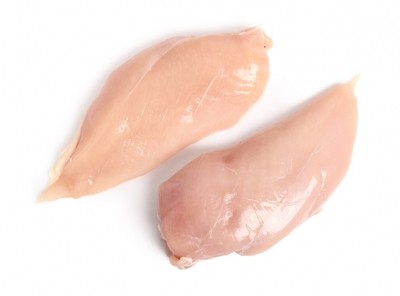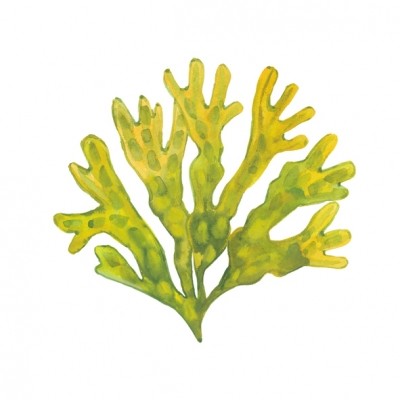reports from IPPE
Seaweed is for the birds, and producers interested in ABF production

The Ireland-based seaweed feed additive company shared results of new trials looking at the use of a blended, seaweed-based feed additive in poultry feed at the International Production and Processing Expo (IPPE) in Atlanta earlier this month.
The company is in the process of expanding its research trials to document the use of its feed additives, said Graham Ellis, CEO with Ocean Harvest Technology Limited. “In the last 18 months at our company we’ve turned on the science pretty hard,” he added.
The company has products for several species including swine, poultry and dairy. However, more work is being done to expand the use and market range for its product lines, especially as interest expands in reducing or removing antibiotics used in animal production, he said.
“The whole world is on that wave now,” Ellis told us of antibiotic-free (ABF) production. “Today people are willing to listen and I think many of those companies are going after an ABF solution; today, it is a portion of their production, but it is one that they focus on because they know it’s the future.”
The company is focusing on penetrating market space in the US, Canada and parts of Southeast Asia, he said. “Those are the places where people haven’t had to put solutions in place, so they’re looking for the first time, and that then becomes a great [time and place] to introduce this type of product,” he added.
Efforts in Europe also have been increasing, as there is interest in seaweed-based additives for use in bovine production, he said. “We can’t go to the entire world at once but certainly North America, Europe and the middle of Asia is where we’re heading first,” he added.
However, he added, there is a role for seaweed outside of only ABF production.
“Trying to concentrate on being not only a part of ABF but also helping traditional commercial approaches make the first step,” Ellis said. “The first step is you’ve taken out the AGPs [antibiotic growth promoters] and you’re going to try to reduce therapeutic use as much as you can – at that point we’d come in and we’d often end up as part of a nursery diet and that prebiotic activity gives you a good strong response.”
The second step is removing antibiotics completely, at which point the feed additives could alsoplay a role, he added.
Company background and process
The feed additive producer selected the seaweed included in its feed additives based on the attributes of the different seaweeds and if there was a scalable and sustainable source, said Ellis.
Some of the work done in the past with seaweed started with a product that is locally available, rather than assessing what is the best way to generate a particular result, he said. Adding, “We flipped that on its head and said we need efficacy to solve certain problems in animal feed, and then we looked under the ocean – are there unique things going on in macro-algae that we can use?”
“If the supply chain for the ones we select is not there we will try to make that happen,” he said. “That approach, particularly blending to get the right sort of attributes is pretty unique in the space, and that’s what we think is driving the results so for poultry.”
Blending the seaweeds used allows for a focus on multiple elements within different strains and helps address safety standards, said Ellis. Analysis and processing work is done at the company’s facility in Vietnam.
Seaweeds used in the blends are assessed both for elements like moisture, but also to make sure the bioactives of interest are present and that undesirable elements are not, he added.
Work with poultry nutrition
In poultry feeding trials conducted at the University of Guelph, chickens raised on an antibiotic-free diet and the seaweed additive demonstrated growth improvement, improved breast meat yield and displayed signs of metabolism modulation, Ocean Harvest reported. Birds receiving the supplement also had an improved mortality rate.
Chickens in the 42-feeding trial had a corn-soy-wheat diet with or without the seaweed feed additive included at 0.5%, the company said. Feed intake and body weight were noted on days 0, 10, 24 and 42 to evaluate average daily gain, average daily feed intake and the feed conversion ratio (FCR).
Feed intake and FCR for birds on both diets were similar, the company said. Body weight gain in control group birds was 2.83kg/bird and those on the supplemented diet was 3kg/bird and breast meat yield increased 8.4% for birds receiving the feed additive.
“We did dose response because again we were trying to get into a narrow but a highly profitable band,” added Ellis. “We identified a much lower inclusion rate than we’d ever had in the past and a very significant response – the exciting bit is not just that it works, but in each of the calculations we did associated with the trial, the farmer would see an ROI of about 130%, which is pretty good in an industry that well developed.”
The feed additive uses whole algae rather than an extract and functions predominantly as a prebiotic, he said. “Animals are really good at extracting what they want from seaweed we don’t need to do for them and it also keeps the price down in terms of processing,” he added.
A second trial with poultry is currently in progress to replicate the data, he said.
Expansion of seaweed in animal nutrition
Ocean Harvest has had a presence in the swine industry that is starting to see pipeline expansion, especially in North America, he said. There also has been increasing interest from larger producers.
“The pipeline is in the many millions of piglets not in the hundreds of thousands anymore and that’s certainly a good marker of getting ready for mainstream,” he said. The work with poultry producers is in earlier stages, he added.
The company also has been working in dairy with the aim or improving digestion to provide more energy for the cow, he said. “What our current users see is a little higher milk fat, a little higher protein and a reduced somatic cell count,” he added.
There also in interest in developing dairy feed additives that could provide for some methane reduction, said Ellis.
“Maybe you won’t get all the benefits you would from our dairy maximization product, but a farmer could get a product that will take care of the new issues of having to reduce methane and get a little boost in the milk value to pay for it,” he said. “That would be a very interesting product to have on the market.”
There is interest in working with cattle development in the future, but not much work has been done in that area yet, he said.
“We look at natural gut health and say a prebiotic is sort of the foundation, but it’s not the end solution,” Ellis said. “Once we got into prebiotics as a foundation we look to improve and tweak with other products potentially in combination with prebiotics … then you can get to a very good overall solution. But that comes after you’ve got a good prebiotic getting all you can out of the animal as it already exists.”
As the company starts to work with larger clients, the anticipation is that there will be more interest in joint work, he said.
In addition to production benefits, Ocean Harvest is focusing on microbiome work, said Ellis. Working with a prebiotic, there is interest in knowing how the microbiome is being manipulated.
“What we’re looking to do with the company in future years is to start to make that more of a feedback loop so that we can design tighter and tighter to really get out of the microbiome what people want,” he said.















